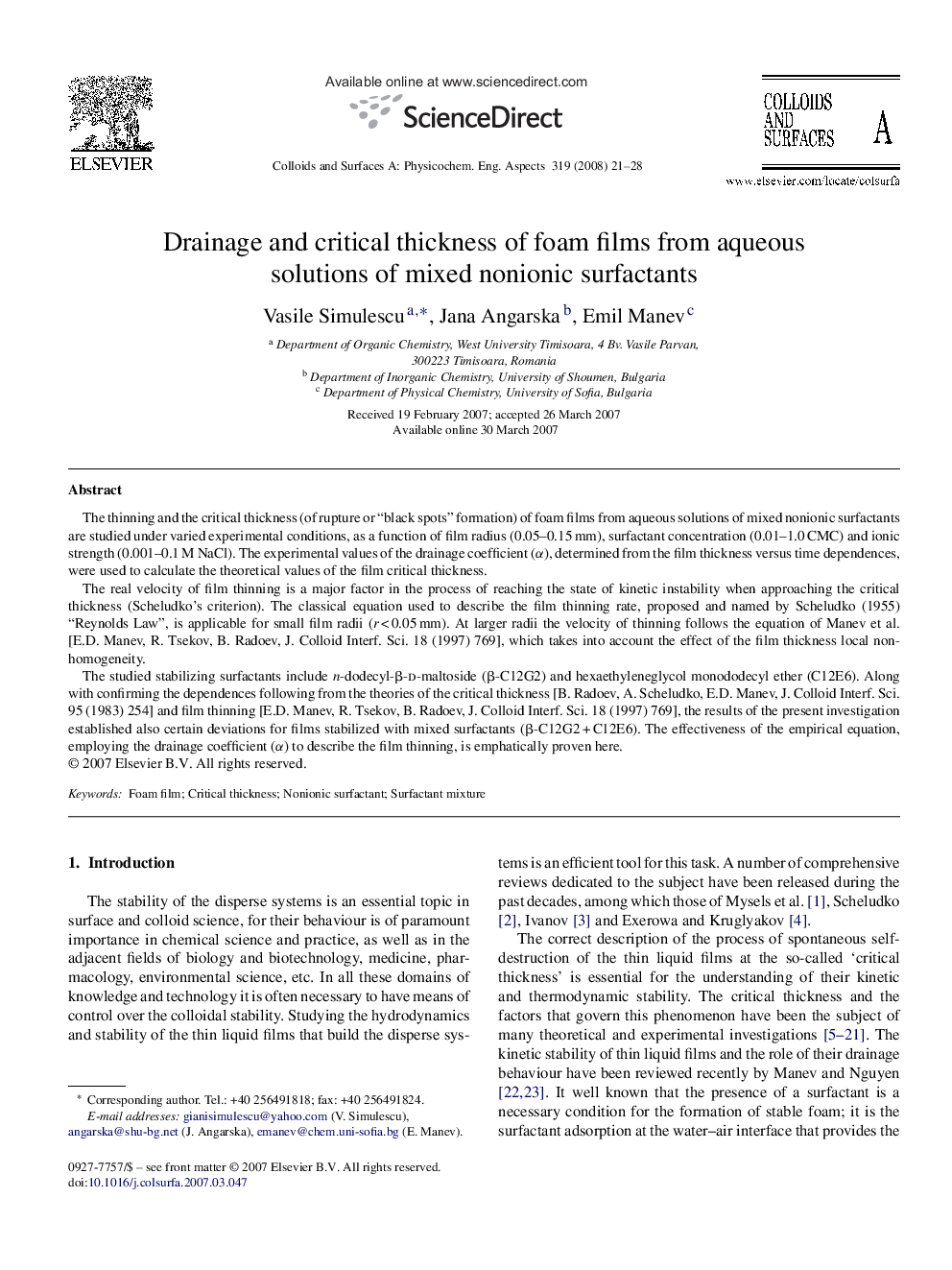| Article ID | Journal | Published Year | Pages | File Type |
|---|---|---|---|---|
| 596884 | Colloids and Surfaces A: Physicochemical and Engineering Aspects | 2008 | 8 Pages |
The thinning and the critical thickness (of rupture or “black spots” formation) of foam films from aqueous solutions of mixed nonionic surfactants are studied under varied experimental conditions, as a function of film radius (0.05–0.15 mm), surfactant concentration (0.01–1.0 CMC) and ionic strength (0.001–0.1 M NaCl). The experimental values of the drainage coefficient (α), determined from the film thickness versus time dependences, were used to calculate the theoretical values of the film critical thickness.The real velocity of film thinning is a major factor in the process of reaching the state of kinetic instability when approaching the critical thickness (Scheludko's criterion). The classical equation used to describe the film thinning rate, proposed and named by Scheludko (1955) “Reynolds Law”, is applicable for small film radii (r < 0.05 mm). At larger radii the velocity of thinning follows the equation of Manev et al. [E.D. Manev, R. Tsekov, B. Radoev, J. Colloid Interf. Sci. 18 (1997) 769], which takes into account the effect of the film thickness local non-homogeneity.The studied stabilizing surfactants include n-dodecyl-β-d-maltoside (β-C12G2) and hexaethyleneglycol monododecyl ether (C12E6). Along with confirming the dependences following from the theories of the critical thickness [B. Radoev, A. Scheludko, E.D. Manev, J. Colloid Interf. Sci. 95 (1983) 254] and film thinning [E.D. Manev, R. Tsekov, B. Radoev, J. Colloid Interf. Sci. 18 (1997) 769], the results of the present investigation established also certain deviations for films stabilized with mixed surfactants (β-C12G2 + C12E6). The effectiveness of the empirical equation, employing the drainage coefficient (α) to describe the film thinning, is emphatically proven here.
